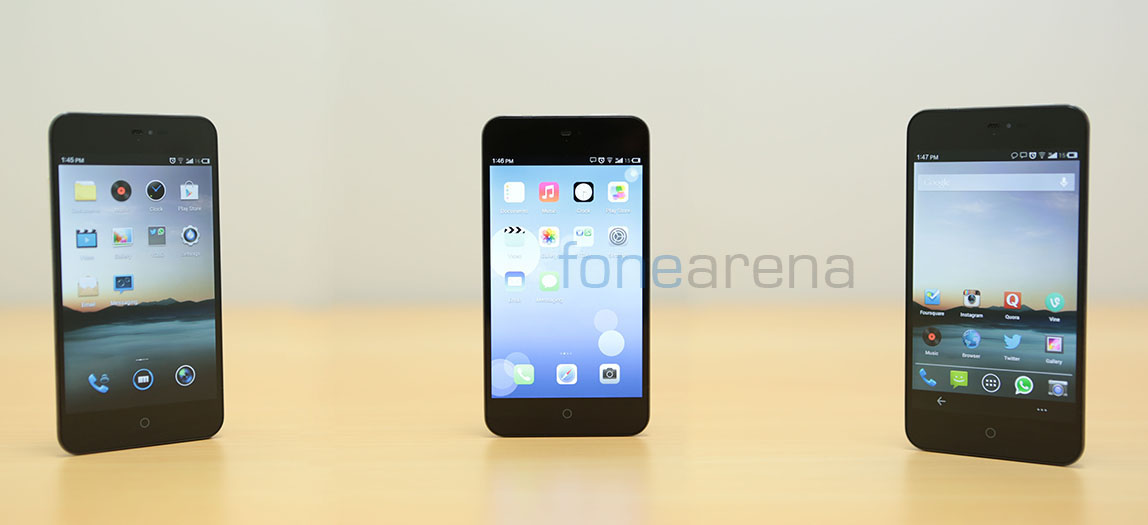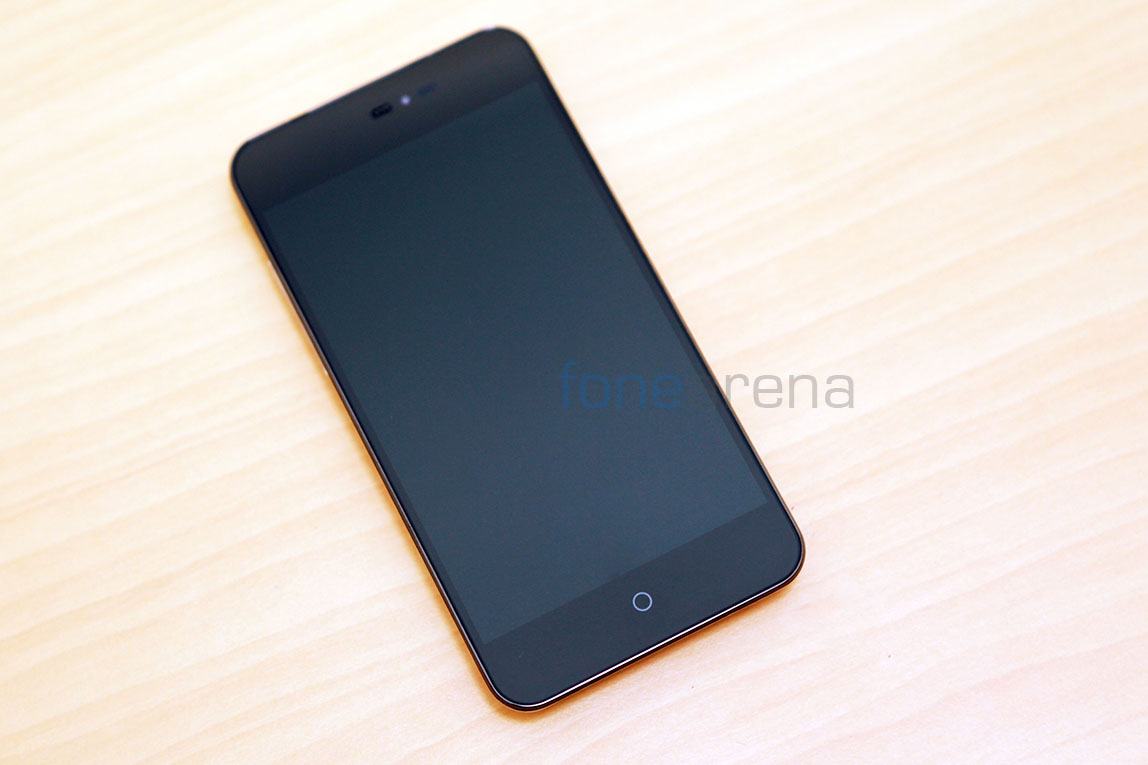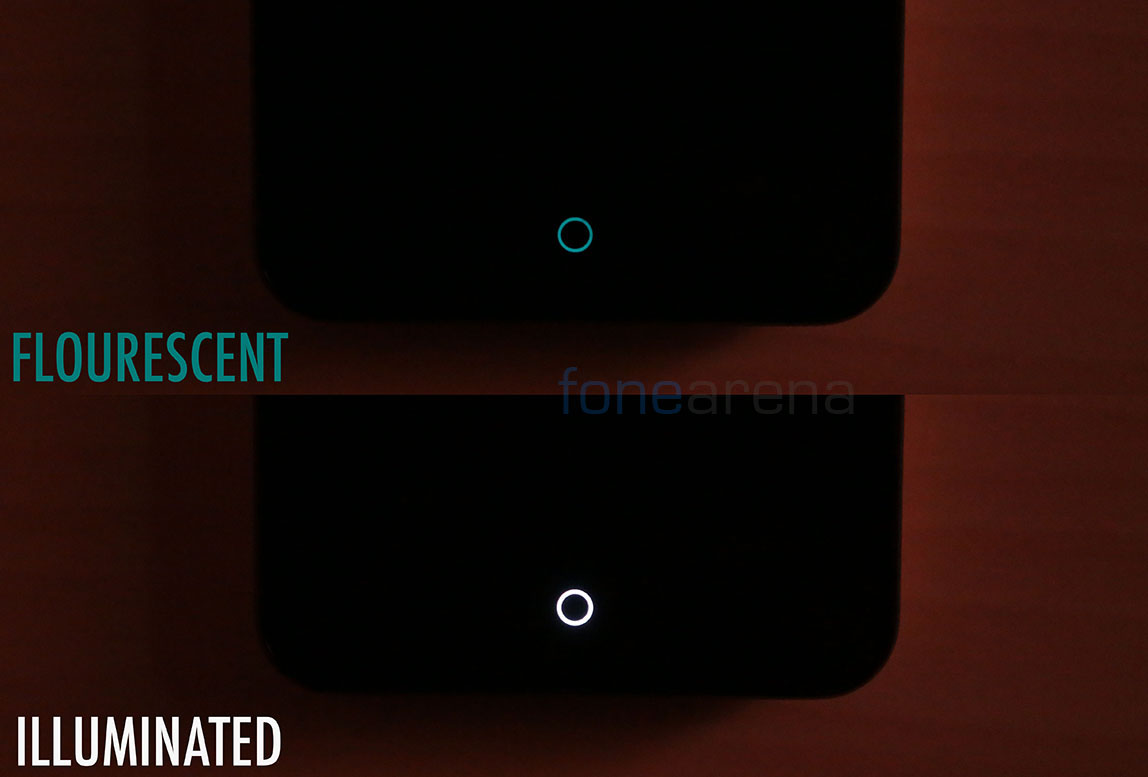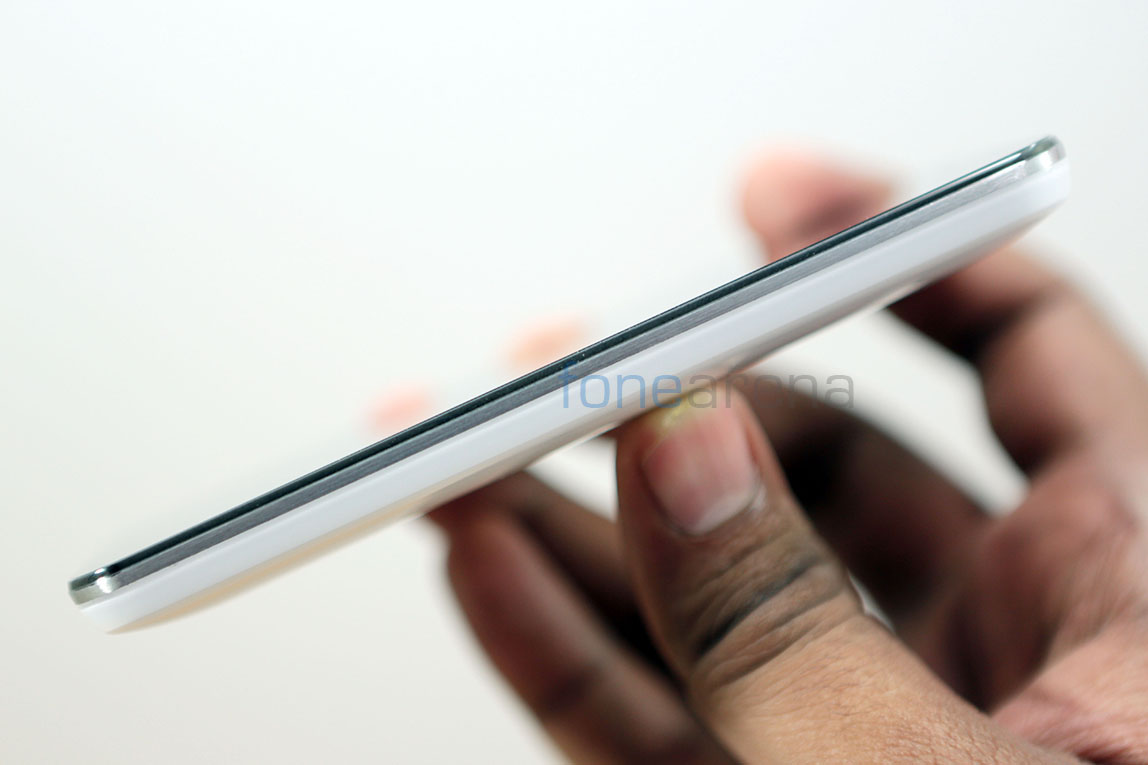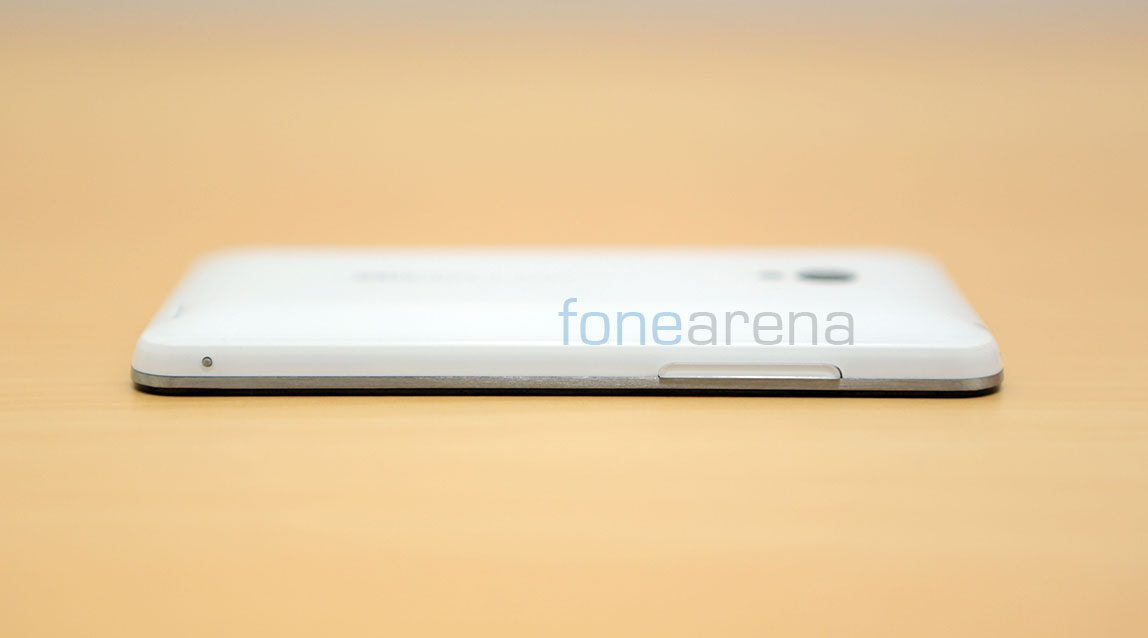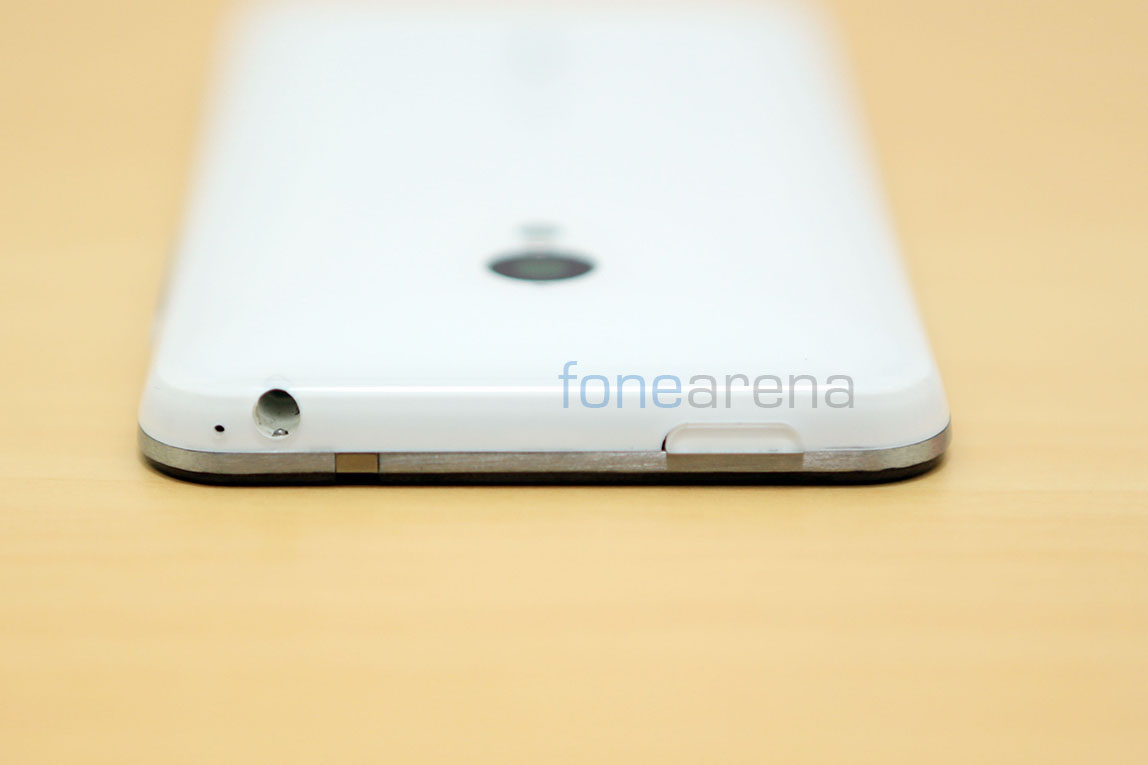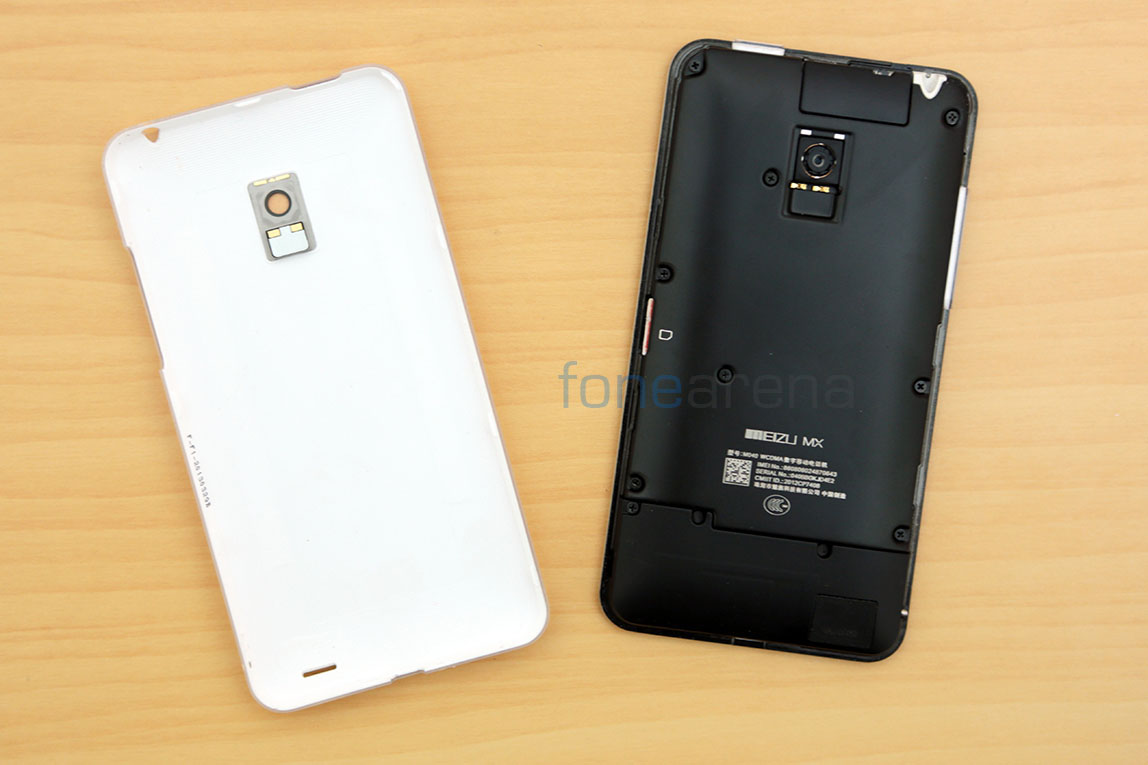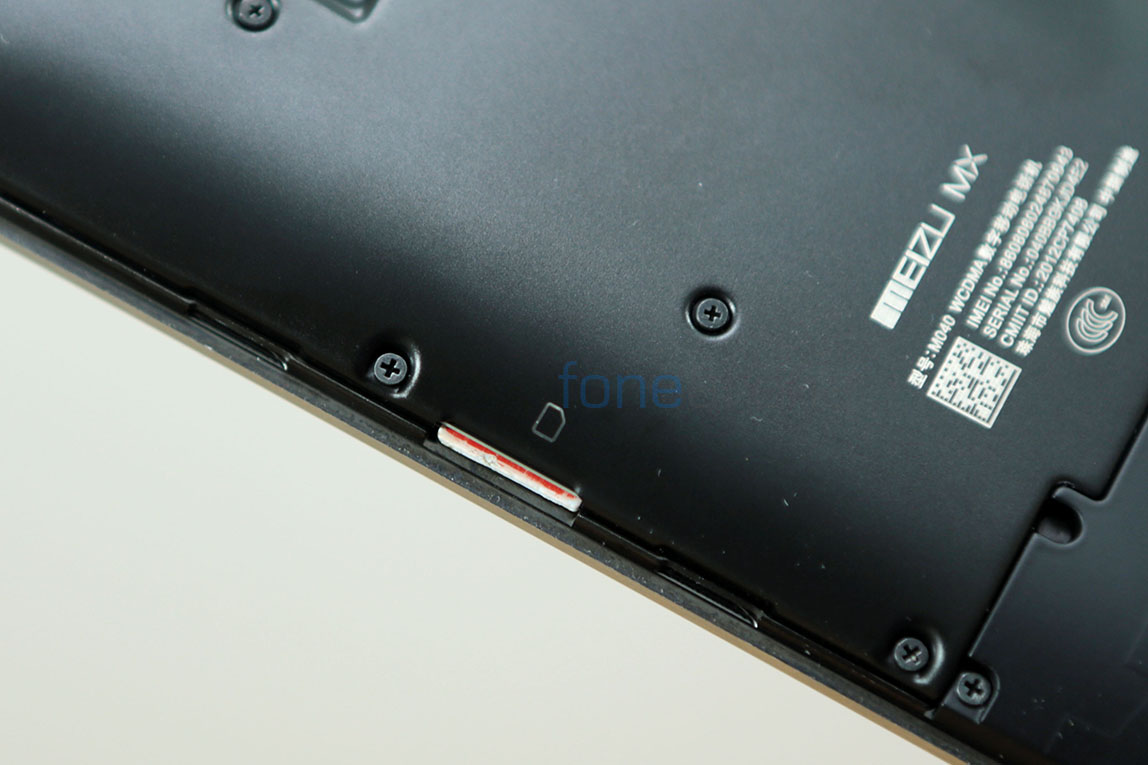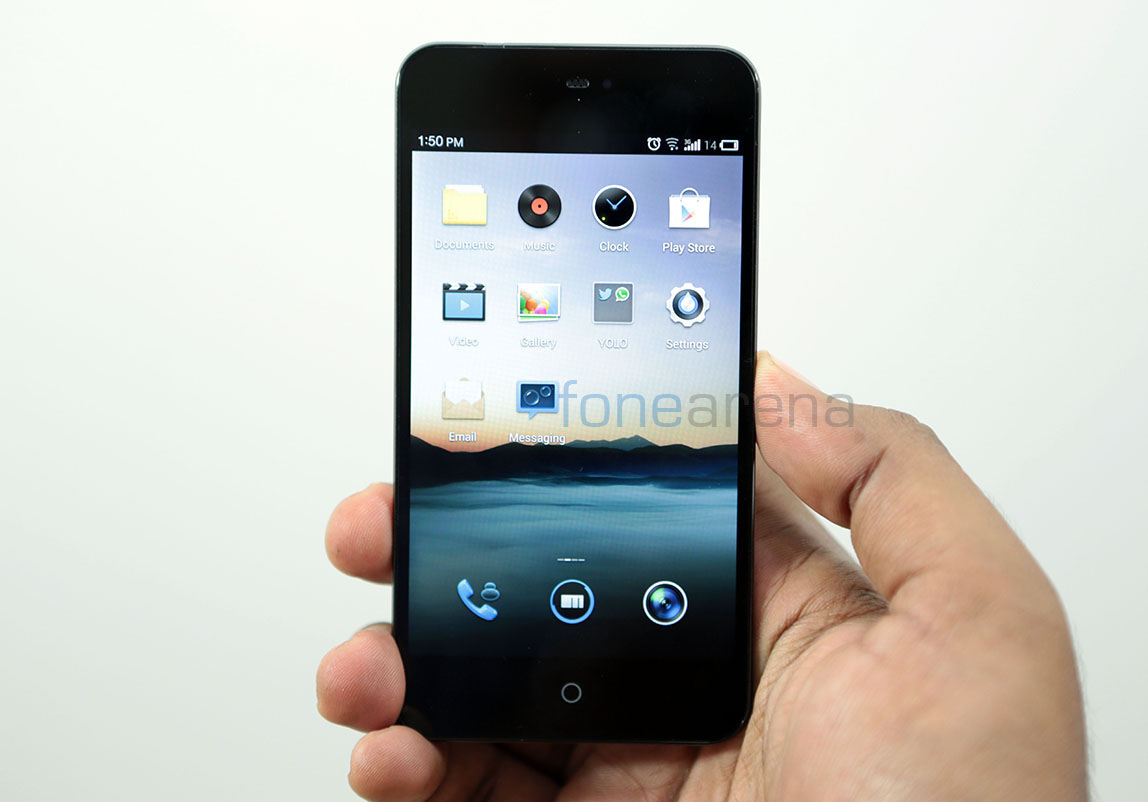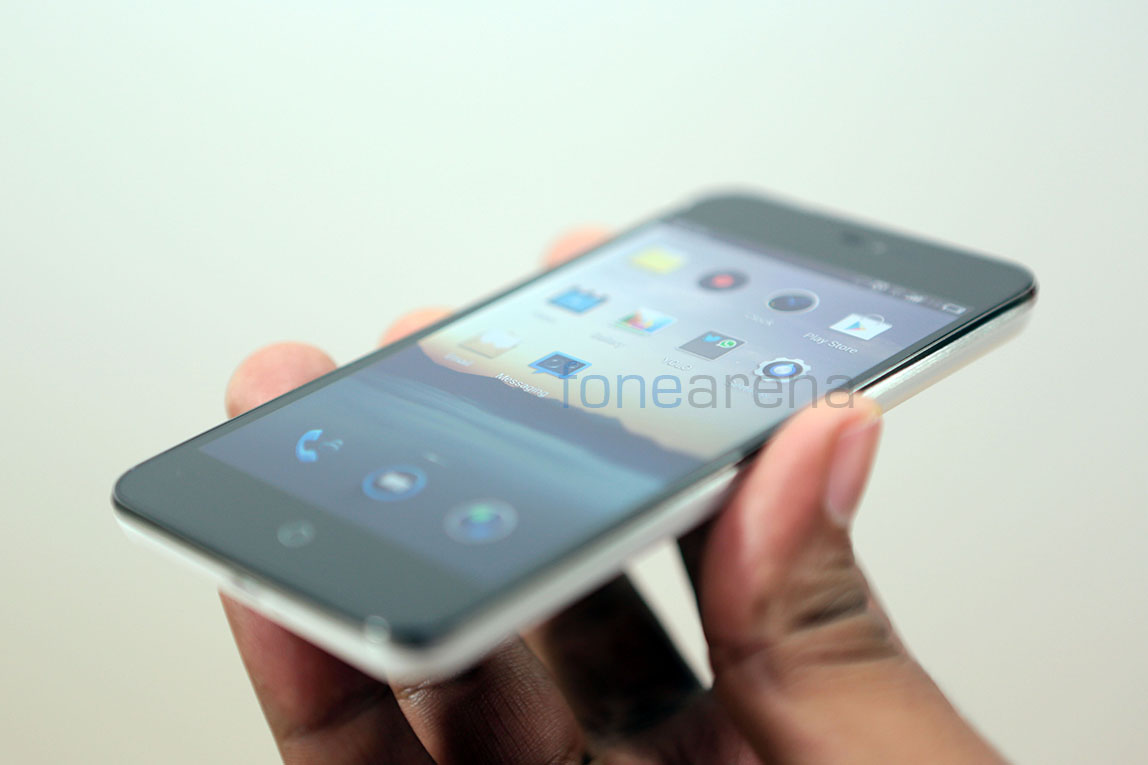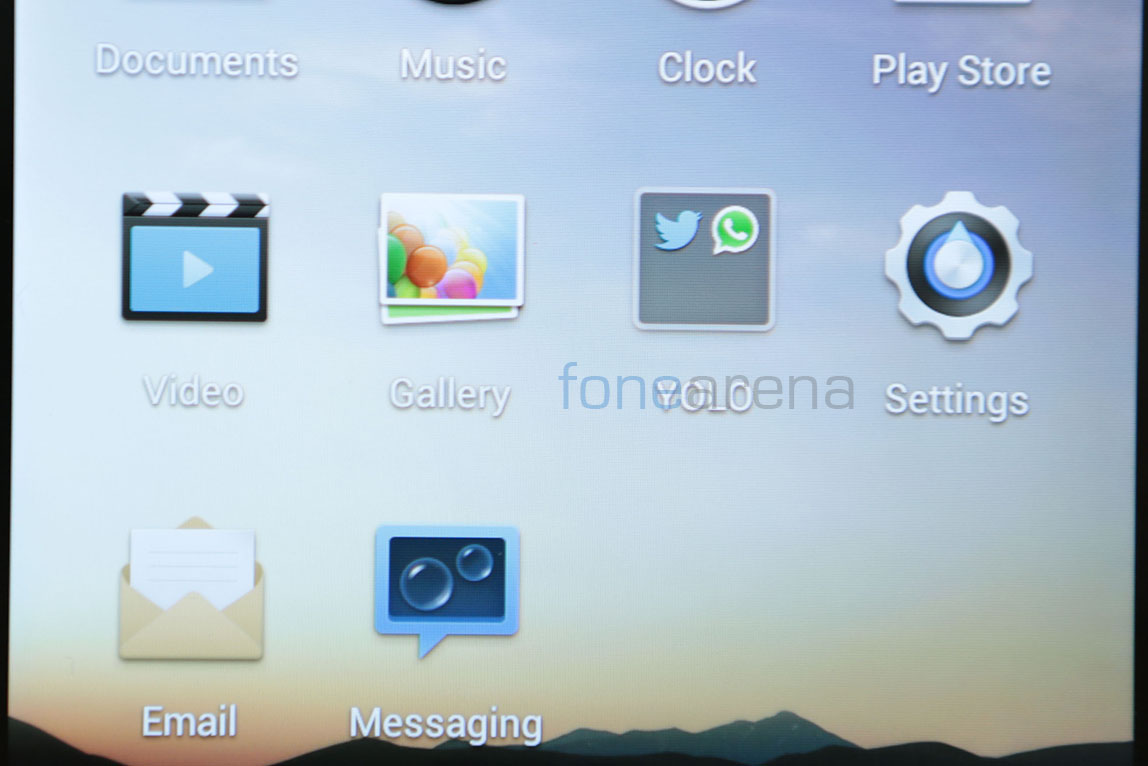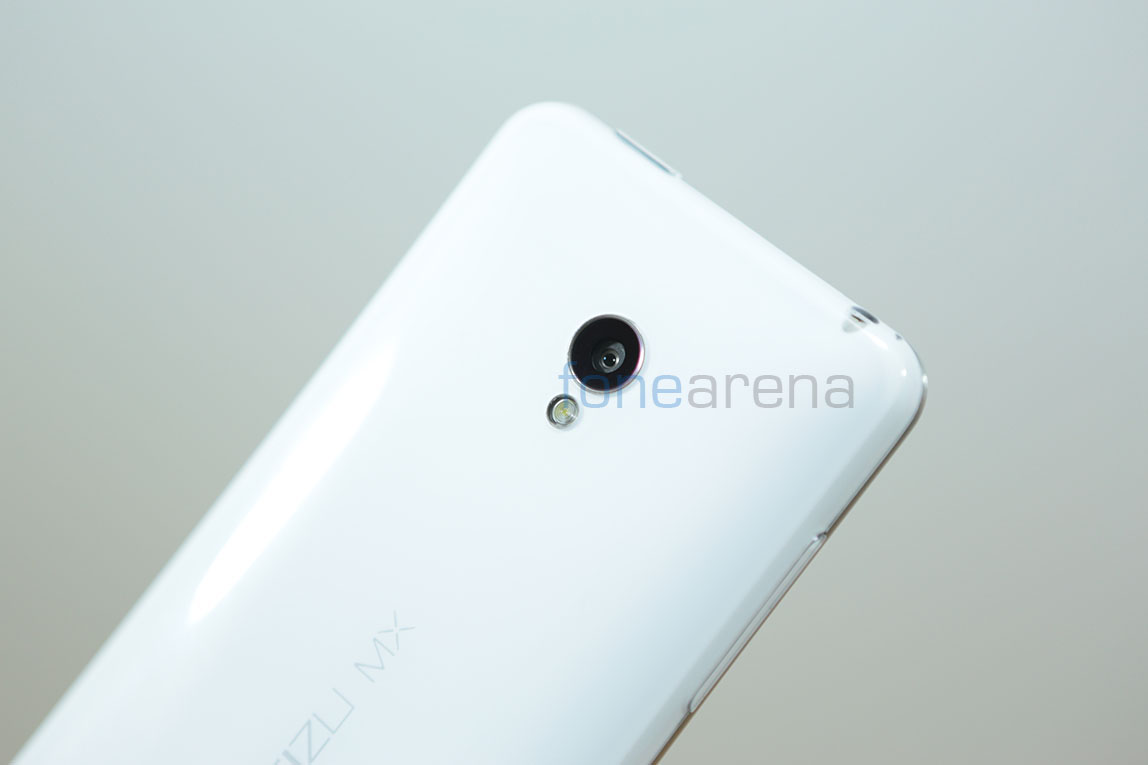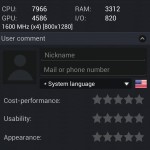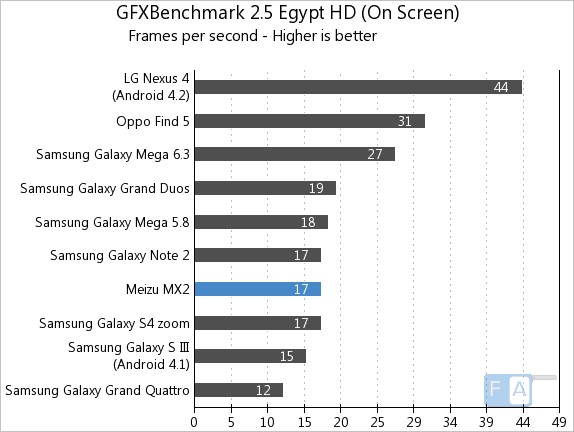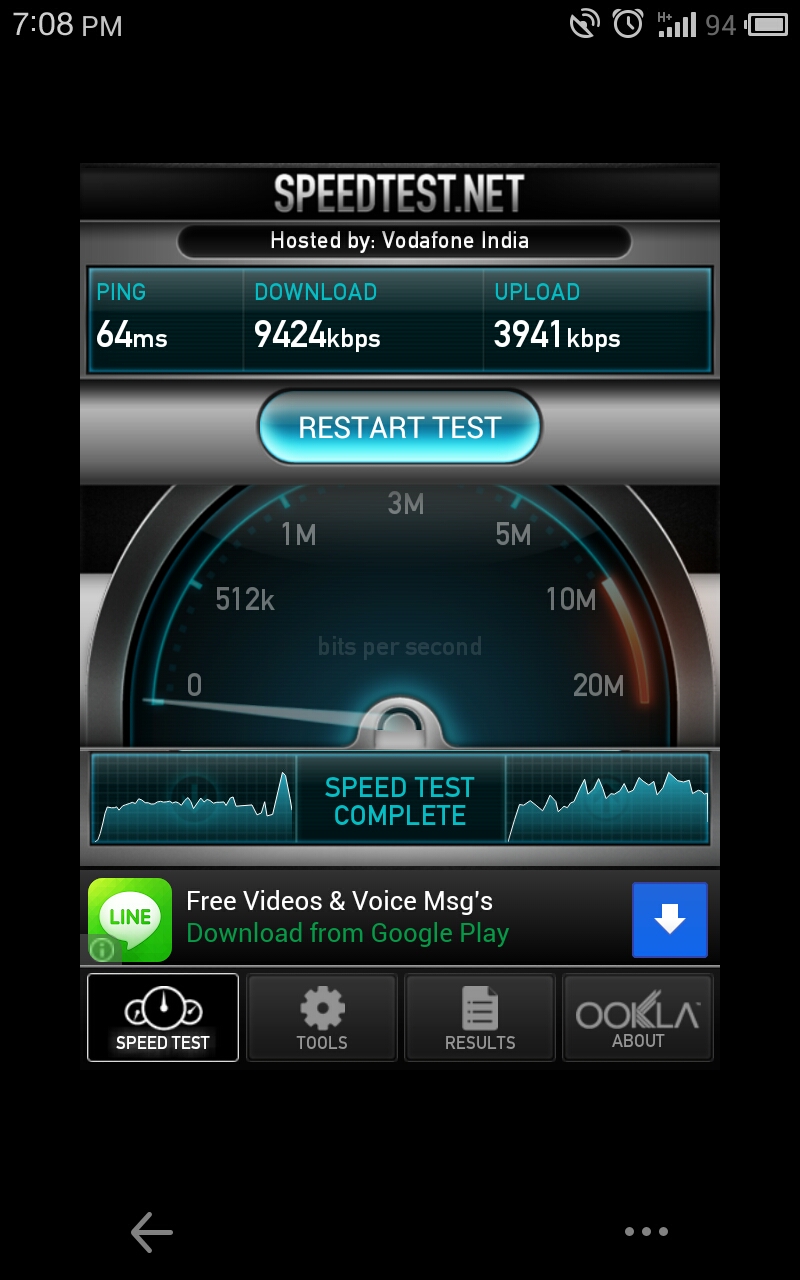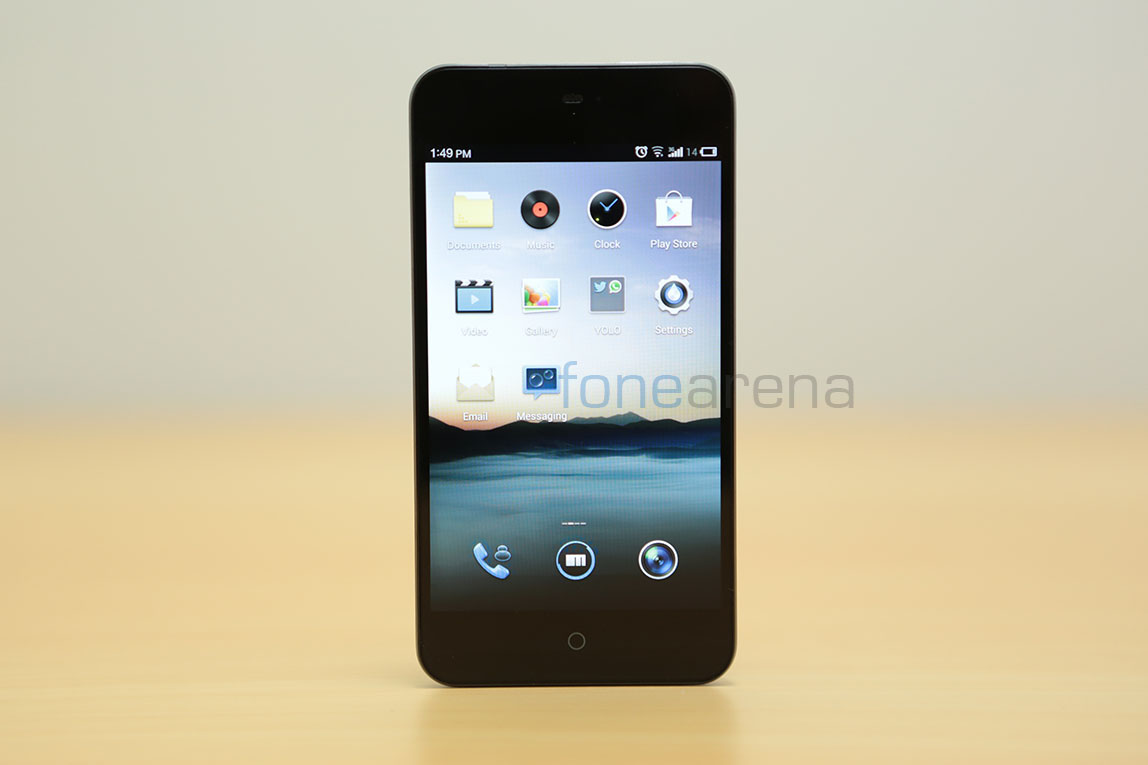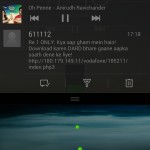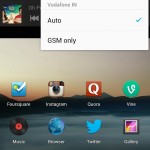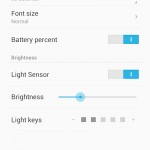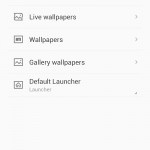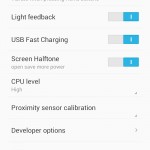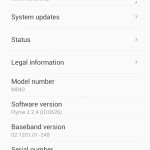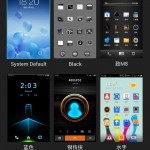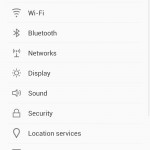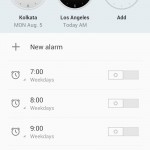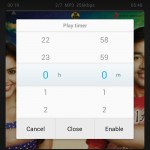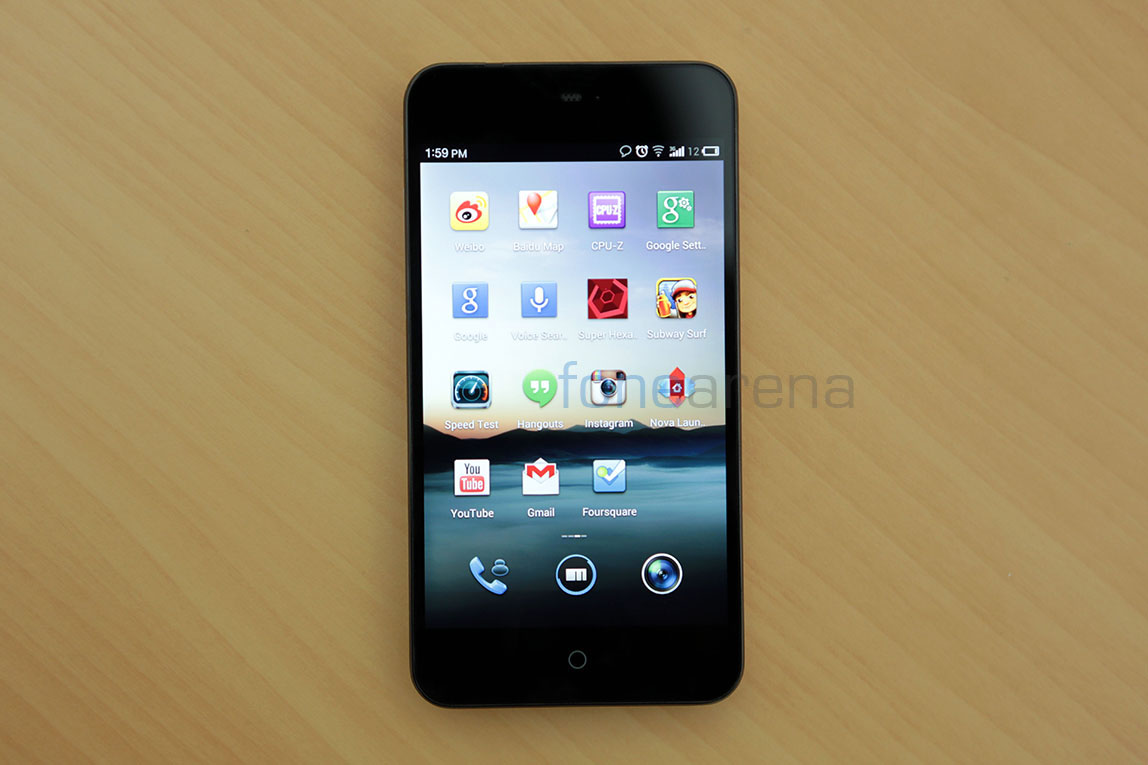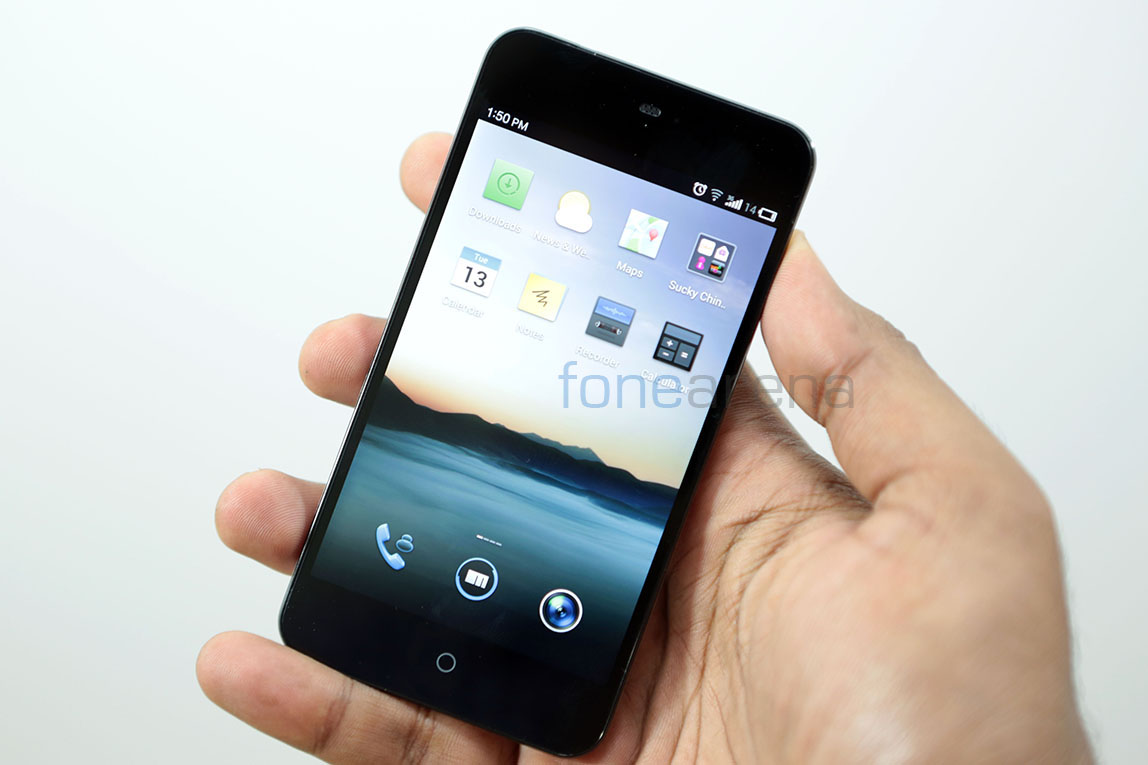The first words that usually come to our mind at the mention of a Chinese phone are cheap, unreliable and poorly built. But it didn’t take long to see that these are plain misconceptions, especially with devices like the Oppo Find 5. The Meizu MX2 invoked similar reactions from us, as we were starting to use and test this gorgeous device. As a company that has been widely known for making iPhone clones like the M8, the Meizu MX was a refreshing change and a departure from the cloning legacy, and the MX2 is an improvement upon its predecessor in good measure. So, how good is the Meizu MX2? Read on to find out.
Video Review
httpv://www.youtube.com/watch?v=wZyNfDELx3c
Note – Check out our unboxing post for the video of the box contents.
The design of the Meizu MX2 is simple and minimalistic. Boasting super thin bezels and a laminated display, the device looks slick. You’d be hard pressed to not say this resembles an Apple device, because it definitely does, especially with a round capacitive touch button and the super thin 3.15mm bezel, reminding us a lot of the iPod Touch.
A single piece of glass completely envelopes the front with a small cut out for the grilled ear piece. The 720p front facing camera along with the proximity and ambient light sensors are neatly hidden under the glass, above the display.
Below the display resides the single home button, which is capacitive and fluorescent, with feedback in light as well as haptics. It also works as a way to wake or lock the phone, making the power button on the top redundant. A double tap wakes the phone in standby and opens the multitasking tray when in the UI. A tap and hold locks the phone when the device is in use.
It’s also worth noting that these gestures work only when the proximity sensor believes it’s not in your pants, pretty intuitive, and we loved the way it made the power button irrelevant, while glowing in the dark at the same time. As a bonus, the home button also works as the notification light, but with a breathing single coloured light, really cool nevertheless.
While the front is made of glass, the sides tell you that the device is made of three layers. The top layer in black is metal and acts as a frame. This, along with another layer of brushed metal that treads along the sides make up the rim of the MX2, and it does look really classy. Beneath the metal lies the high quality plastic that encompasses the remaining sides and the back of the device, with controls and components embedded on them.
The left side houses the volume rocker, which has a single piece translucent button. This is due to the Dual Injection moulding of the back case, which makes it really special. Like the Lumia 620, the outer layer is a clear layer while the inner is opaque. This makes for an interesting aesthetic addition.
It is especially visible near the 3.5mm audio jack on the top, that sits alongside a secondary microphone and the similarly translucent power/lock switch. Also, if you keenly notice, there is a small part of the top that is not metal, and that part is actually a segment of the antenna. It improves the network performance, presumably because metal gets in the way. We can confirm that there is no death grip situation here, but it certainly impacts negatively on the signal when you cover that part with your hand. Shouldn’t be a problem in real life scenarios though.
The left side of the phone also has the small hole which is used to pry open the back cover. Opening the back cover is extremely hard and you need the special in-box tool to do it, doesn’t make it any easier. You almost always have the impression of breaking the back cover, but it’s solid and we wished Meizu could have done something different here.
Underneath the back cover, you have an all-metal construction with shielding from electromagnetic waves and static electricity, which Meizu says, is one of a kind. On the top of the back resides the 8 megapixel camera unit with the single LED flash stuck on to the back cover rather than on the device.
You have the loudspeaker down at the bottom right and the micro SIM card slot at the left.
The back is made of plastic and is nicely curved to fit your hands and thanks to the overall compactness of the phone, the phone is a pleasure to hold. The one handed usage was fairly easier than most other phones at this point in time, and that’s a laudable fact. Easily one of the most comfortable devices we have recently used or tested.
Finally, the right side of the phone is left flush while the bottom part houses the USB port and the primary microphone for voice calls. Onto finer details of the hardware then.
Display
The Meizu MX2 has a 4.44 inch 1280×800 16:10 IPS LCD screen that is, laminated using the TOL technology. Basically, it means that it is bonded to the touchscreen like many other displays these days, but the result is stunning. Meizu claims that this is a new surface lamination technique that vastly improves the colour balance and the viewing angles of the display and we tend to wholeheartedly agree, because the display is definitely nothing short of stunning in every aspect we have tested.
The display holds its ground in every viewing angle possible and has excellent outdoor visibility thanks to the perfect ambient light sensor. Meizu also claims that their CABC – Content adaptive brightness control helps in improving the battery life. While we couldn’t actually test its existence, we did feel that the sensor selective ramps up/down the brightness according to the apps. The camera app always had optimal brightness and made outdoor shooting very comfortable. The 347 ppi screen was very crisp and rendered the beautiful UI to perfection.The blacks are not as deep as you’d expect, but for a LCD, it is very good. The brightness is more than adequate and performs really well outdoors.
At close inspection though, you will be able to notice some banding in the display which might be due to the refresh rate, but that aside, this is easily one of the best displays we have ever used. Right along with the iPhone 5, the Oppo Find 5 and the HTC One, the Meizu MX2 possibly ranks as one of the best displays ever made, for a smartphone. But as with any product or a component, there is a downside, which only varies in intensity. The display backlight slightly bleeds at the edges when viewed at extreme angles. While this is not a major issue and does not affect usage in any way, it is a sign of a fumble in quality.
Camera
The camera on the Meizu MX2 is a 8 megapixel unit with a backside illuminated sensor and a single LED flash. Amongst the 5 elements of the lens, there is a blue filter coating on four, preventing infrared interferences for a clearer picture. The lens also has a sufficiently fast f2.4 aperture. Sporting two microphones, the MX2 can record full HD 1080p videos at 30 fps with stereo audio.
The main point of interaction with the camera is its minimalistic user interface. You have a shutter button on the right which changes according to the mode and can be switched using the small switch above the shutter. Below the software shutter button is the thumbnail of the latest image that takes you to the gallery upon a click. Over at the top left you have the options to switch between the two cameras and a toggle for the flash at the bottom left. The contextual menu opens up different options for stills and videos.
You can change between the capture modes like Normal, Panorama(four way, high resolution), smile shot and burst shot. You can then change the ISO upto 800 or set it to auto, change the scene modes accordingly or set it to auto and also change the white balance. The “Other” menu reveals options for geotagging, wide dynamic range capture, gesture capture and various resolution image sizes. While this is all applicable for stills, you get limited options for video which includes just video size, scene and white balance.
Talking of the camera performance, the results are very mixed. The MX2 takes amazingly detailed photos and disappointingly soft photos at the same time, it’s simply a superb yet unreliable camera. Since the sensor is small, the over aggressive metering spoils shots with bright backgrounds by either underexposing or overexposing it, so we resorted to using the “Wide Dynamic Range” mode a lot. On that note, lets take a look at the camera samples now.
Daylight
As you can see above, some of the photos have really awesome detail even at 100%, but some photos are disappointingly soft and defocused. We wish we could have answers to this problem, but the only thing we can say is, may be the post processing algorithm or the lens is doing the damage. We also have our doubts on the WDR mode, as most photos taken with that mode turn out softer than the normal. This is very much evident in the excellent macro pics that the MX2 snapped –
Macro
If you closely look at the macro photos above, you’d be really surprised to see that the snaps have not a trace of noise even at 100%, which is mind blowing for a camera, on a phone. The likes of 808 and the Lumia 1020 are obviously better due to oversampling, but getting this amount of detail in a clean snap is rather really surprising. Do note that all the photos above are taken with WDR off, as macro shots were a bane of that mode and results were completely unusable. While some WDR shots have come out extremely well, some are too soft and unreliable. But it is good to note that unlike other cameras, the WDR mode on this camera takes bracketed shots really fast without much of a shake, good in that aspect.
In low light though, the camera struggles to capture photos without noise. The ISO is way too high always and we can’t really do anything about it, strictly speaking. Lowering the ISO doesn’t help the low light situation and the single LED flash is of not much use either. Here are some samples –
As you can see above, the shake and noise were two inevitable things that crept into every low light photo we took. The last one was a low light scene that we tried with the WDR mode, but that turned out to be the softest image we have ever seen from the device. We think the noise reduction is so harsh, it completely softens the pic, and that’s the case with the other WDR photos above too. Sometimes a dealbreaker, sometimes not.
The device can also take sweep panorama shots in both horizontal as well as vertical orientations. Here is a horizontal sample, in low light and in a high resolution. The height or width, depending on the orientation, always stays at 1088, which is pretty nice for a panorama.
This shot has no discrepancies at all, which is quite nice as it is a sweep panorama unlike a step-by-step method other apps follow. So, overall when it comes to stills performance, the Meizu MX2 is a mixed bag, with excellent results and softened pics at the same time. If it is a software issue, Meizu should look at fixing this, as the camera hardware proves to be really awesome in daylight conditions. Forget about low light though, as the camera optics and the hardware are too constrained to perform adequately. That said, the video recording on this device is pretty decent too. Take a look at a full HD 1080p(actually 1920×1088) video sample with ambient stereo audio –
httpv://www.youtube.com/watch?v=jWlxTVwQTJg
As you can see above, even though the audio is stereo, it is a bit quiet and not that clear partly because of the 32KHz codec. Recording at just 7Mbps bitrate, the video quality is not that great either, with constantly fluctuating white balance and exposure. Overall, it is just average but decent enough for a smartphone.
Internals
The Meizu MX2 runs on a custom made homegrown SoC called the MX5S.
- CPU: MX5S, 1.6 GHz 4-core A9, 32 nm HKMG
- RAM: dual-channel 2GB LPDDR2 1066
- Others: new generation of noise-reducing chip, dual-battery managing chip, independent audio decoding chip, independent photographic processing chip
The MX5S is actually based on the Samsung Exynos 4412 that powers the Samsung Galaxy Note II and other similar devices from Samsung. The 1.6 GHz Quad Core A9 chip is really powerful, giving the the MX2 a nice performance boost. Graphics are powered by the Mali 400MP4 GPU which is quad core again, and provides ample amounts of power for gaming and other strenuous tasks. And as noted above, it has additional specific chips for image processing, noise reduction in calls, battery management and audio decoding. These are usually part of the SoC, but since it is a custom chip solution, Meizu might have gone for a tighter integration with hardware and software with these single purpose chips. You get 2GB of RAM out of which 1.83 GB is available, with around 50% of it always free under normal usage.
In terms of real time performance, the MX2 is very fast and fluid. The stock UI is not much of a problem for the powerful 4412 chip to render and games are not a problem at all too. We tried some casual games as well as tasking games such as Asphalt 7 and got great performance throughout. We also conducted some synthetic benchmark tests with the device and here are the results –
This is how it compares with other devices with similar chipsets.
As you can see above, this is much in line with the Galaxy Note II, and do remember that this device also released almost an year back, so the new devices have an unfair advantage. All said, the real life performance is just as good as any other device we have used, which is good. So, yes, overall performance is really good irrespective of what the benchmark scores say.
Connectivity, Storage and other hardware
The Meizu MX2 is not stocked with connectivity options unlike other devices we have seen. As we noted that this is a custom chip, there has been some cut down on unnecessary hardware, and it shows.
It has 3G HSPA+ connectivity with the 2100 MHz band that happily works in India with optimal speed. Other connectivity options include Bluetooth 4.0 and WiFi b/g/n with WiFi Direct. There is no DLNA, FM Radio or NFC, so that’s a bummer, but there is GLONASS, GPS and inertial navigation using the gyroscope so you’re well covered in terms of navigation options.
The MX2 comes in various storage options, and we’ve got the base model with 16 GB of internal memory. The user available storage is at 13.57GB which is quite sufficient for most functions, but the lack of a micro SD slot is a concern for music and movie lovers alike. As mentioned earlier, there are a lot of sensors on this device which is unsurprising for any modern phone. Among other output devices, the loudspeaker deserves a mention, not for its merits rather for its lack of loudness. It is really silent on most occasions and we wished it was louder for calls as well as music.
Software
The Meizu MX2 is yet another Android device that doesn’t look like one. Running on a heavily modified custom skin called the “Flyme OS 2.0”, the MX2 is in a league of devices that don’t look or function anything like the stock Android interface but retains the app base and other Android advantages. Running on Android 4.1.1, the Flyme OS is blessed with project butter and Google Now, but the other functions are strictly controlled like, you know, iOS. Lets start with the lockscreen.
The lockscreen is plain beautiful. You get three standard shortcuts at the bottom, for the dialer, “slide up to unlock” and the messages app. You have access to the camera from swipe from any side of the edges, left or right and of course the notification drop down is accessible for quick access to all the system level notifications from the lock screen. You have an extremely cool animation that gets activated during charging, and has quick controls for music when it is playing. Again, it is very simple and beautiful, and much like iOS, it is a controlled experience here.
The notifications drop down bar is actually dynamic, with it resizing itself according to the content. While you get lots of quick actionable items because of rich notifications in Android 4.1.1, the drop down becomes bigger if you have many items. There are the standard toggles on the bar for the connectivity options and even quick network mode and WiFi selection, which is much welcome, but we can’t help but miss the rich notifications on all items, not just the first one, which is how it works in the Flyme OS.
Coming to the launcher, again, it is very much like iOS. There is a dock of three or five customizable shortcuts, with the one in the middle(Browser) being persistent. Above the dock is a grid of app icons, 4X4 with options to add widgets(limited selection) if you need to clutter it up. Honestly, we think that copying iOS is a poor design decision, but all hail Android for its flexibility, we can actually install third party launchers. But before that, we did extensively use the default launcher, and it is flexible in a different way, using a Theme manager. There are a LOT of custom made themes from users and developers alike which changes the styles of the OS including icons, tool tips, dialer, slider controls and what not, and it makes for interesting themes. it is almost like the jail broken iPhones and their springboard themes. There is even a iOS 7 theme which suddenly makes sense because it does nicely fit with the launcher, ha!
The settings menu of the launcher is feature rich and allows you to control most aspects of the device much like any Android device, but there are a few things missing, as well as additional here. The customize menu has the theme manager that lets you choose custom themes, and it even lets you set the default launcher in case you have installed any third party launcher, which you mostly will, or at least we recommend you do. The WiFi Direct option inside WiFi lets you communicate or set up local networks within its sub menu. The Display menu has options to control the ambient light sensor and the light intensity of the home key. The other important additions are hidden under the accessibility menu, with options like haptic feedback, light feedback, USB fast charging, Screen halftone(saves battery) and even CPU usage levels, which are important to save battery. You can check out all the options here in these screenshots above, and you will then understand what we are talking about.
Overall the user interface is really slick and minimal, with white and dark gray being the theme. Other OEMs need to take note of these Chinese interfaces and learn a thing or two, seriously. Since the device has only one hardware capacitive button, the others were rendered in a bottom bar, like the back and contextual menu, much like what you see on other phones with overlaid shortcuts. While it is non existent for its default apps, third party apps do miss out on some screen real estate in portrait, but things get better in landscape as the back button and the option automatically re-arrange themselves to the top and adds a contextual menu to the top right of the notification bar. This works irrespective of the app being default or third party.
Speaking of default apps, utilities like Calculator, recorder and alarm clock were nicely designed, but the file manager stands out, with a great two column lay out and quick access to all kinds of files you mostly need. The gallery app has different auto albums and integrates well with the camera, however we wish it’d been a little bit faster in decoding all the pics. The Music and video players are pretty nice too, with their own OS-styled UIs. To make sure none look remotely like Android, every default app is skinned with a unified design in mind, and even in depth settings look nothing like Android, which is really surprising. The only Google apps pre installed with this device are Play Store, Search and Maps, but you can download any other Google app from the store and start using them, like for example, GMail, which does not come pre installed. You can even change the keyboard to the default stock one by downloading it from the Play Store, but the default keyboard itself is really nice, with an extra row always in reach. Make sure you delete the Chinese language packs for the keyboard as they were kinda intrusive at first even when typing in English.
Software wise, this is possibly one of the most polished experiences you will ever have, but a bit constrained if you are going to hold on to the stock launcher. But, like us, if you just load up a third party launcher like Nova, you can experience a decent Android UI as well as an extremely polished Meizu Flyme UI, all in one. Take it as a suggestion.
Battery Life
The Meizu MX2 has a 1750 mAh Lithium Polymer battery, which is quite small in modern smartphones. With a 4.4 inch display, the battery struggles to keep its life going for a whole day. Using 3G often kills it faster, with it completely depleted in 7-8 hours, but if you’re on WiFi and usage is average, the battery life comes for 16-19 hours at a stretch. It definitely has better standby times than other devices we have seen, so in that case, it is definitely good but the actual usage times are much lesser than modern devices with bigger batteries.
Rated at 10 hours of talktime and 33o hours of standby on 3G, the battery can withstand a good deal of music usage, thanks to the dedicated low power chip. There are various chips employed to take over low power processing so as to offload the CPU, and that technique works in the favor of the longevity of the battery. The accessibility settings provide lots of options to reduce battery usage including haptic feedback, light key feedback, intensity and even CPU throttling. This helps in increasing the battery life to an extent. There were no in built power saving options, as even the battery sub menu inside the settings was missing. Overall, we would say the battery life is just average and nothing spectacular.
Conclusion
In the end, I completely loved to use the Meizu MX2. It turned a lot of heads due to its stunningly sleek design and the amazing display, which was a great window to show off the beautiful UI and overall performance. However, the camera was a mixed bag. Even though it produced really great results, it was just unreliable, and that goes for the battery life too, which is just average. But, is the Meizu MX2 good enough? Definitely! Devices like these have constantly impressed us mainly due to our low expectations from a Chinese brand. But even then, overall as a phone, the MX2 stands out from the crowd with a consistently beautiful hardware and software experience that you don’t see on many Android devices these days. It might be too late to recommend this device as rumours of a MX3 are already doing its rounds, but if you are looking for a compact and good looking Android device, don’t buy the specced-down Minis, but the MX2 instead and you’ll be quite satisfied.
Pros
- Great design and build quality
- Amazing display
- Superb performance
Cons
- Camera takes great pictures, only rarely
- Average Battery Life
- Limited customization in stock launcher

